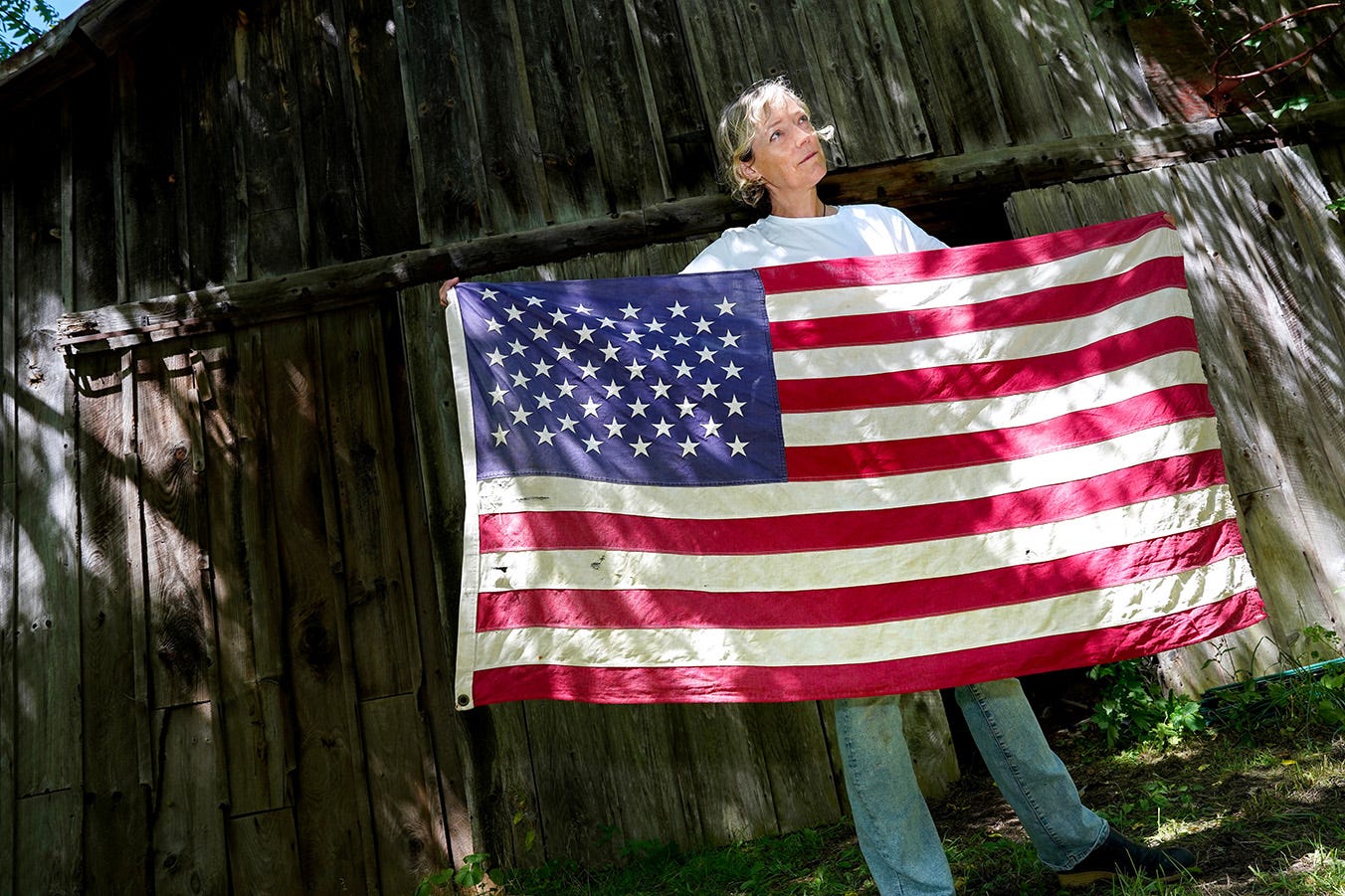I’m Finally Hanging My American Flag Growing up, I was taught to dislike the American flag and all that it represented. This year, for the first time, I hung one outside my house.
Writer Larissa Phillips holds her U.S. flag at her home in Earlton, New York. (All photos by Cindy Schultz for The Free Press)
I come across it every now and then: our American flag. It has lived in the linen closet for years. The same questions run through my head each time I see it, usually in the middle of searching for a tablecloth or a set of napkins. What am I supposed to do with this? Should I hang it in my yard? Buy a flagpole? Why do we even have it? Repeatedly, I have resolved to give it away, but something always holds me back. The provenance of this particular flag is murky. My husband must have found it somewhere, perhaps before we even met. It’s a beautiful vintage piece: stitched, with embroidered stars and the colors faded to a perfect denim blue and the weathered red of an old barn. But I’ve spent most of my adult life as a progressive Democrat. My people don’t fly the American flag. In fact, we hate the flag and what it represents: a deeply flawed nation. And we don’t like the Americans who proudly wave it either. Patriotism has always been for other people, or other generations.
My grandfather, born in 1912, used to hoist a flag up a flagpole every morning, and take it down every evening, at least when we were visiting. His ex-wife, my grandmother, used to plant little American flags into the flowerpots in her garden in recognition of the Fourth of July. They, like my other set of grandparents, were proud American exceptionalists: They considered our nation better than every other one on Earth. But I wasn’t brought up that way. My parents, born in 1940, came of age observing the vast gulf between the ideals of this country and its practices. They became activists, and it was only natural that they would teach my brother, sister, and me, from an early age, about the injustices wrought by the American government. They took us to more protest marches than parades and taught us to live by the values we espoused. We participated in the grape boycott in support of migrant workers, for instance. (I was always stunned to see grapes at my friends’ houses: literally forbidden fruit!) And one summer, in the mid-’70s, our family drove across the country, stopping at every Indian reservation on the way, so my father could check on infrastructure projects he was overseeing for an aid organization. At one point, one of Cesar Chavez’s top organizers lived in our childhood home in New Rochelle, New York—where the only flag I remember seeing was for a labor union...
Become a paid subscriber Get access to our comments section, special columns like TGIF and Things Worth Remembering, tickets in advance to our live events, and more. UPGRADE TODAY |

